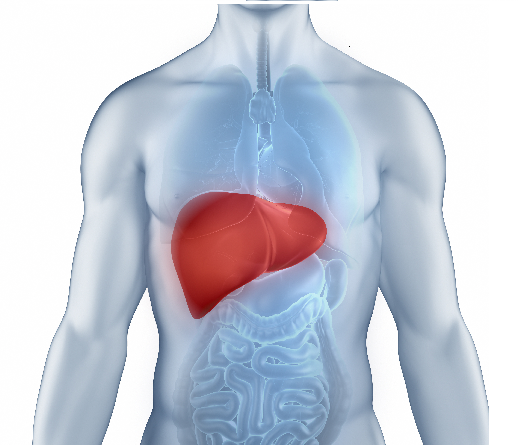Epistaxis Unveiled: Causes, Symptoms, Diagnosis and Management
- 13 Sep, 2024
- Written by Team Dr Lal PathLabs
Medically Approved by Dr. Seema
Table of Contents
Epistaxis, commonly known as a nosebleed, is where bleeding starts from the blood vessels in the nose. It can be a minor inconvenience or, less commonly, a sign of a more severe condition. Research from the Indian Journal of Otolaryngology indicates that about 60% of people will experience a nosebleed at some point, and fewer than 10% need medical care.
What is Epistaxis?
Epistaxis is a condition where blood flows from the tissue lining the inside of the nose. The nose contains numerous tiny blood vessels that warm and moisten the air inhaled. These vessels are situated close to the surface of the nasal lining, making them susceptible to injury. Air moving through the nose can dry out and irritate these blood vessels, leading to a nosebleed. This bleeding can occur in one or both nostrils, though it typically affects just one nostril.
Nosebleed is generally divided into two categories: anterior and posterior:
1. Anterior nosebleeds originate from the front part of the nasal septum, where numerous fragile blood vessels are located. These are the most common types and are usually easy to control.
2. Posterior nosebleeds originate deeper in the nasal cavity and involve larger blood vessels. They are less common but tend to be more severe and require medical attention.
What Causes Epistaxis?
Epistaxis can be caused by various factors, which are typically divided into local and systemic epistaxis causes:
1. Local Nosebleed Causes:
- Trauma (e.g., nose picking, injury
- Dry or cold air
- Allergies and infections (e.g., sinusitis)
- Use of nasal sprays or drugs (e.g., cocaine)
- Foreign bodies in the nose
2. Systemic Nosebleed Causes:
- Hypertension
- Blood disorders (e.g., haemophilia)
- Medications (e.g., anticoagulants)
- Alcohol abuse
- Vascular disorders
What are the Risk Factors of Epistaxis?
Certain factors can increase the possibility of epistaxis:
- Environmental Factors: Dry or cold climates can dry out nasal membranes.
- Age: Children and elderly individuals are more susceptible.
- Medical Conditions: Individuals with blood clotting disorders, hypertension, or chronic sinusitis are at higher risk.
- Medications: Use of blood thinners or nasal sprays can increase the risk.
- Lifestyle Factors: Excessive alcohol consumption, smoking, and drug abuse can also contribute to nosebleeds.
What are the Symptoms of Epistaxis?
The primary symptom of epistaxis is bleeding from the nose. The specific symptoms vary on the type of nosebleed:
1. Anterior Epistaxis:
- Blood flowing from one nostril
- Blood can flow from both nostrils if lying down
2. Posterior Epistaxis:
- Blood flowing down the back of the throat
- Potential for more significant bleeding
Other symptoms that may accompany nosebleeds include:
3. Light-headedness or dizziness
4. Nausea (from swallowing blood)
How is Epistaxis Diagnosed?
Diagnosis of epistaxis usually involves a thorough medical history and physical examination. A healthcare provider may perform the following steps:
• Visual Examination: Inspect the inside of the nose to locate the bleeding source.
• Medical History: Review the patient’s medical history, including underlying conditions or medication use.
• Blood Tests: Conduct blood tests to check for clotting disorders or other systemic issues.
• Imaging: In severe or recurrent cases, imaging studies like X-rays or CT scans may be used to identify underlying epistaxis causes.
How to Manage and Prevent Epistaxis?
First Aid for Epistaxis:
For an effective epistaxis management plan, follow these steps:
• Stay Calm: Panic can increase blood pressure and worsen the bleeding.
• Sit Upright: Do not lie down; this reduces blood pressure in the nasal veins.
• Lean Forward: This prevents blood from flowing down the throat.
• Pinch the Nose: Use the thumb and index finger to pinch the nostrils shut for 5-10 minutes.
• Apply Ice: Place a cold compress on the nose and cheeks to constrict blood vessels.
• Avoid nose Blowing: Do not blow the nose for several hours after the bleeding stops.
Medical Treatments:
For persistent or severe nosebleeds, consult a healthcare professional for the following nose-bleeding treatment interventions:
• Nasal Packing: Inserting gauze or specialised nasal tampons to apply pressure.
• Cauterisation: Burning the bleeding blood vessel using chemical or electrical means.
• Medications: Topical decongestants or antiseptics to reduce bleeding and prevent infection.
• Surgery: Surgical measures might be required for severe cases.
Prevention:
To prevent nosebleeds, take these precautions:
• Moisturise: Use saline sprays or gels to keep nasal passages moist.
• Humidify: Use a humidifier in dry environments.
• Avoid Nose Picking: Keep nails short and discourage nose picking, especially in children.
• Manage Allergies: Treat allergies with appropriate medications.
• Monitor Medications: Be cautious with drugs that increase bleeding risk.
Epistaxis can be distressing and needs proper management. Knowing the types, first aid, and when to seek medical attention can help with timely diagnosis and reduce complications. For frequent nosebleeds or concerns about nasal health, consider a CBC test with Dr Lal PathLabs to identify causes and discuss tailored nose bleeding treatment options.
FAQs
1. What are some interesting facts about epistaxis?
Epistaxis is common and usually harmless, often caused by dry air or trauma.
2. What is the primary epistaxis treatment?
Pinch the nose, lean forward, and apply a cold compress. Seek medical help if bleeding lasts over 20 minutes.















